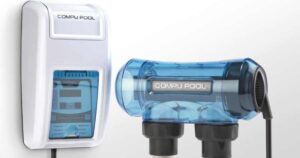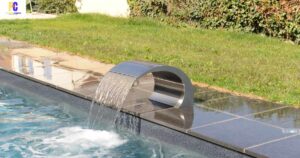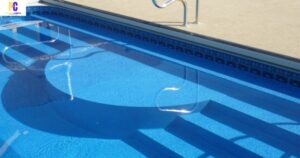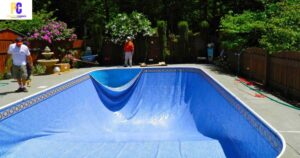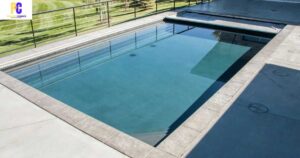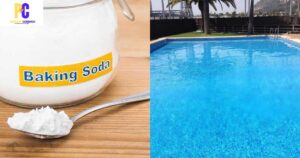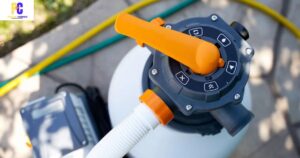Finding leaks in an above-ground pool liner can seem daunting, but with a systematic approach, it can be a relatively straightforward task. First, start by carefully inspecting the pool liner for any visible signs of damage or wear, such as tears, holes, or wrinkles. Check the seams and corners thoroughly, as these areas are common trouble spots.
Next, the water level test can be a helpful method. Fill a bucket with water and place it on the pool steps or another stable surface inside the pool. Ensure the water level inside the bucket matches the pool water level. Mark both water levels inside and outside the bucket. After 24 hours, compare the water levels.
Additionally, a simple and effective technique involves using food coloring. Squeeze a few drops of a bright-colored food dye near areas suspected of having leaks, like seams or wrinkles. If the dye gets sucked into the liner, you’ve found the leak’s location. Once you identify the leak, patch kits designed for pool liners are readily available and can help you seal the leak effectively.
Understanding the Significance of Pool Liner Leaks
Understanding the significance of pool liner leaks is crucial for maintaining a healthy and enjoyable swimming environment. When left unattended, even small leaks can lead to water wastage and increased utility bills. Moreover, leaks can damage the pool’s structural integrity, causing potential safety hazards.
Identifying these leaks early not only saves money on water and repairs but also ensures a longer lifespan for the pool. Regular inspections and prompt repairs not only preserve the pool liner but also contribute to a sustainable and eco-friendly approach to pool ownership, making the swimming experience safer and more enjoyable for everyone.
SteStep-by-Step Guide Detecting Leaks in Your Above Ground Pool Liner
- Find pool leaks to keep your pool clean and fun.
- Check water level for sudden drops.
- Look for tears, holes, or punctures in pool surface.
- Add food coloring to suspected leak areas.
- If color is drawn to a spot, you’ve found the leak.
- Look at the pool’s fittings, like skimmers and jets, for leaks.
- Feel for damp or soft spots, as these could mean leaks.
- Use a leak detection kit to check for leaks more carefully.
- Fixing leaks quickly will keep your pool in good shape.
The Water Level Test A Reliable Leak Detection Method
The water level test is a dependable method for finding leaks in above-ground pool liners. To perform this test, place a bucket filled with water on the pool steps or a sturdy surface within the pool, ensuring it’s at the same level as the pool water. Mark both the inside and outside water levels of the bucket. After 24 hours, compare the levels.
If the pool water level has dropped significantly more than the water inside the bucket, it indicates a leak. This simple yet effective technique helps pinpoint leaks, allowing for timely repairs and ensuring your pool stays in excellent condition for enjoyable swimming experiences.
Preventive Measures How to Avoid Leaks in Your Above Ground Pool
To prevent leaks in your above ground pool, there are several simple measures you can take. First and foremost, regularly inspect your pool liner for any signs of wear and tear, such as cracks or tears. Patch up any minor damages immediately using a pool liner repair kit. Additionally, be cautious while using sharp objects or toys with sharp edges in the pool, as they can puncture the liner.
Proper water balance is crucial in preventing leaks. Monitor the water chemistry regularly, ensuring the pH, alkalinity, and calcium hardness levels are within the recommended range. Imbalanced water can weaken the liner material over time. Furthermore, investing in a good-quality pool cover can shield your pool from harsh weather conditions and debris, reducing the risk of damage.
Expert Tips Troubleshooting and Fixing Above Ground Pool Liner Leaks
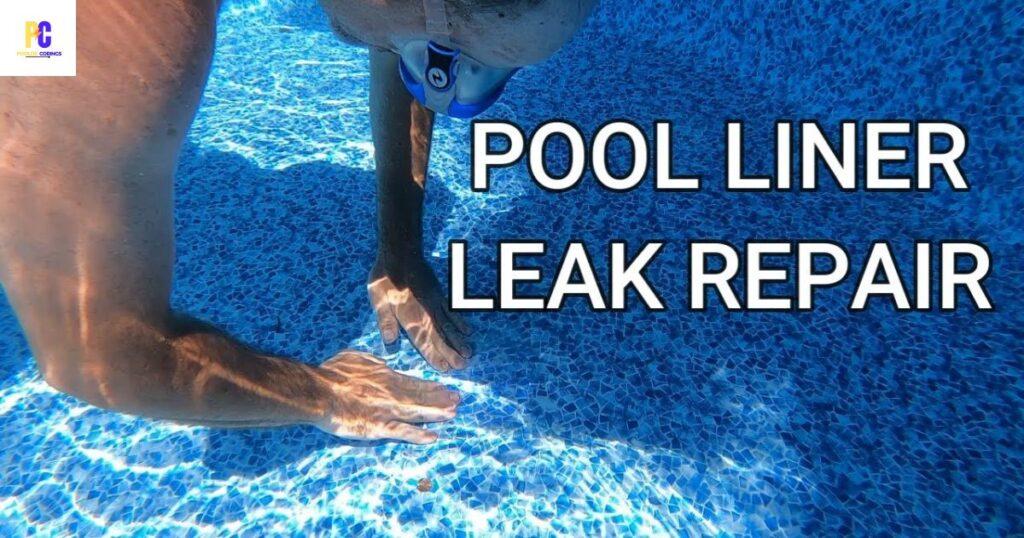
To prevent leaks in your above ground pool, there are several simple measures you can take. First and foremost, regularly inspect your pool liner for any signs of wear and tear, such as cracks or tears. Patch up any minor damages immediately using a pool liner repair kit. Additionally, be cautious while using sharp objects or toys with sharp edges in the pool, as they can puncture the liner.
Proper water balance is crucial in preventing leaks. Monitor the water chemistry regularly, ensuring the pH, alkalinity, and calcium hardness levels are within the recommended range. Imbalanced water can weaken the liner material over time. Furthermore, investing in a good-quality pool cover can shield your pool from harsh weather conditions and debris, reducing the risk of damage.
DIY Leak Detection Cost-Effective Methods for Pool Owners
Detecting leaks in your above ground pool liner doesn’t have to break the bank. There are cost-effective DIY methods that pool owners can employ to identify and fix leaks without professional help. One popular technique involves using food coloring. Simply drop a few drops of food coloring near the suspected leak.
If the color is drawn towards a certain area, it indicates the presence of a leak. Another method is the bucket test: fill a bucket with pool water and place it on the pool step. Mark the water levels inside and outside the bucket, then wait 24 hours. If the pool water level drops more than the water inside the bucket, a leak is likely.
Professional Leak Detection Services When to Seek Professional Help
When it comes to detecting leaks in your above ground pool liner, there are times when seeking professional help is the best solution. If you’ve tried DIY methods without success or if you’re unsure about the source of the leak, it’s wise to call in experts. Professional leak detection services have specialized tools and experienced technicians who can pinpoint even the smallest leaks accurately
By relying on their expertise, you save time and effort, ensuring that the issue is resolved swiftly, allowing you to enjoy your pool without worrying about water loss or damage. Don’t hesitate to reach out to these professionals if you want a quick, efficient, and long-lasting solution to your pool liner leaks.
Signs of Pool Liner Damage Early Warning Signals You Shouldn’t Ignore
When it comes to detecting leaks in your above ground pool liner, there are times when seeking professional help is the best solution. If you’ve tried DIY methods without success or if you’re unsure about the source of the leak, it’s wise to call in experts. Professional leak detection services have specialized tools and experienced technicians who can pinpoint even the smallest leaks accurately.
By relying on their expertise, you save time and effort, ensuring that the issue is resolved swiftly, allowing you to enjoy your pool without worrying about water loss or damage. Don’t hesitate to reach out to these professionals if you want a quick, efficient, and long-lasting solution to your pool liner leaks.
Comparing Pool Liner Materials Which Is Most Resistant to Leaks?
When it comes to choosing the right pool liner material, durability and leak resistance are paramount. There are several options available in the market, each with its unique qualities. Vinyl liners, for instance, are popular for their flexibility and ability to resist punctures, making them relatively leak-resistant.
Additionally, some pool liners are made from PVC (polyvinyl chloride), known for its strength and resistance to chemicals and UV rays. PVC liners provide excellent leak protection and are less likely to deteriorate over time. Ultimately, the choice between these materials depends on your specific pool needs, budget, and maintenance preferences.
FAQs
How can I tell if my above ground pool liner is leaking?
Keep an eye on the water level. If it consistently drops more than usual, there might be a leak. Also, check for dampness or soft spots around the pool.
What should I do if I suspect a leak in my pool liner?
Start by inspecting the liner for visible tears. If none are found, perform a simple dye test. Add food coloring near suspected areas; if it’s drawn towards a spot, that’s likely the leak.
Are there common areas where leaks occur in above ground pool liners?
Yes, check around fittings like skimmers and return jets. Also, inspect the liner near steps. These areas often experience wear and tear, leading to leaks.
Can I fix a small leak in the pool liner myself?
Yes, for minor leaks, patch kits are available. Clean and dry the area thoroughly before applying the patch. It’s a cost-effective solution for small damages.
When should I consider professional help for leak detection?
If you’ve tried the basic tests and still can’t find the leak, or if you’re uncomfortable making repairs, it’s wise to hire a professional. They have specialized tools for accurate detection.
Conclusion
“Detecting leaks in your above ground pool liner, specifically in above ground pool liner, is essential for maintaining a refreshing and safe swimming environment. By following the step-by-step methods outlined in this article, you can promptly identify and address any leaks, ensuring your pool stays in optimal condition.”
Regular inspection, coupled with quick action, not only preserves the longevity of your above ground pool liner but also guarantees countless hours of enjoyment for you, your family, and friends. Remember, with a keen eye and a little effort, you can keep your above ground pool liner leak-free, allowing everyone to dive in and splash around without worries.

